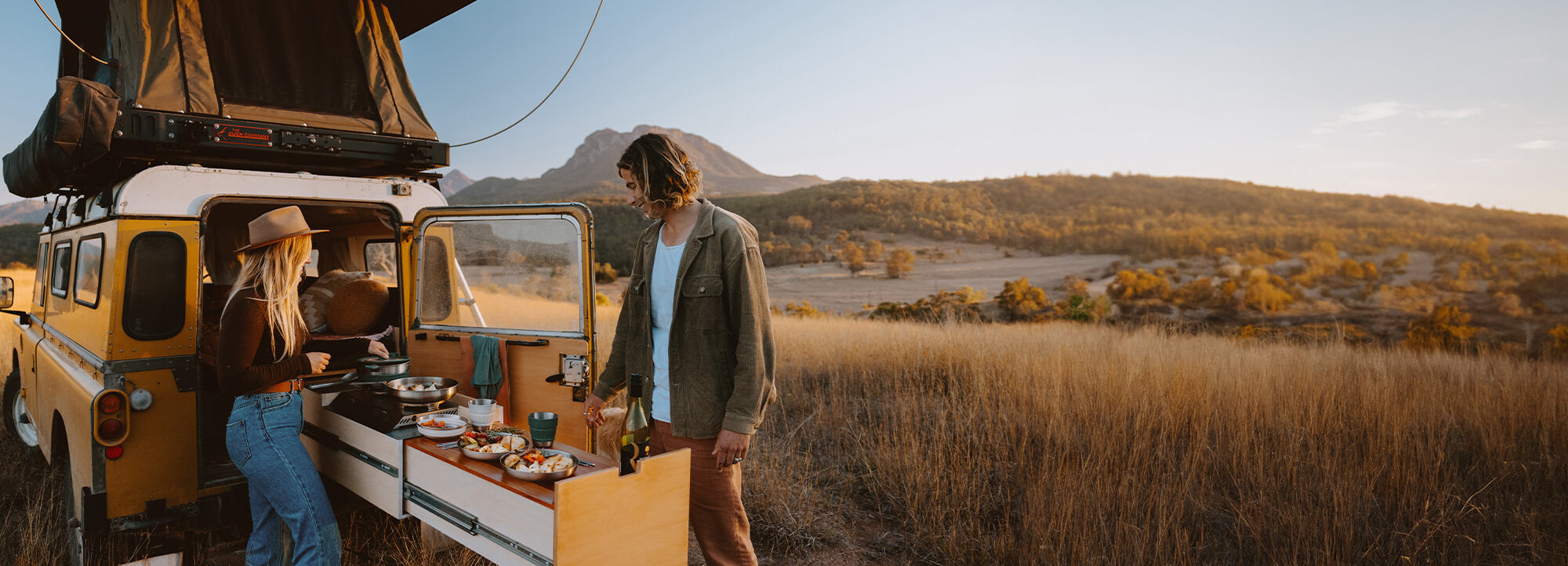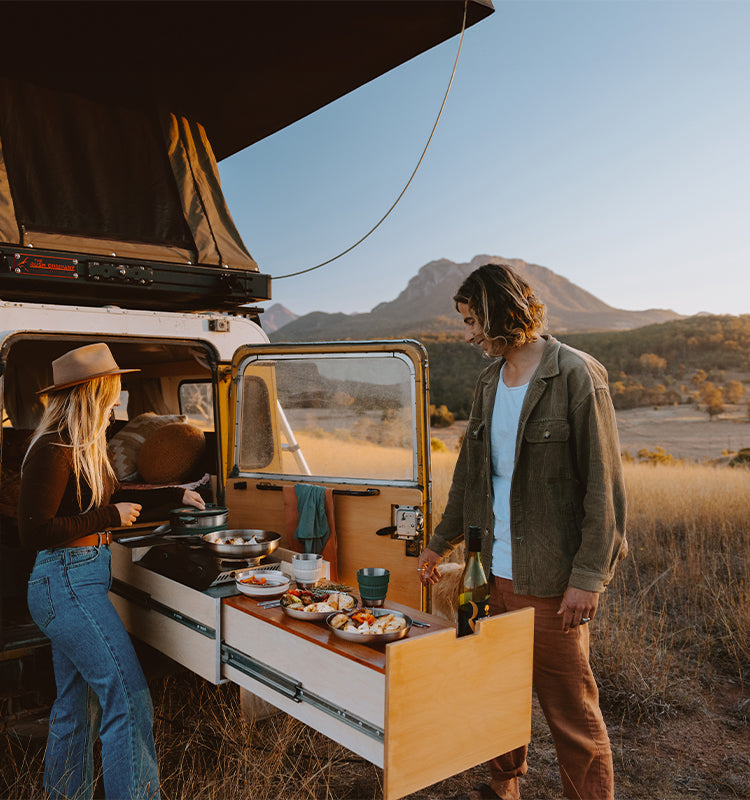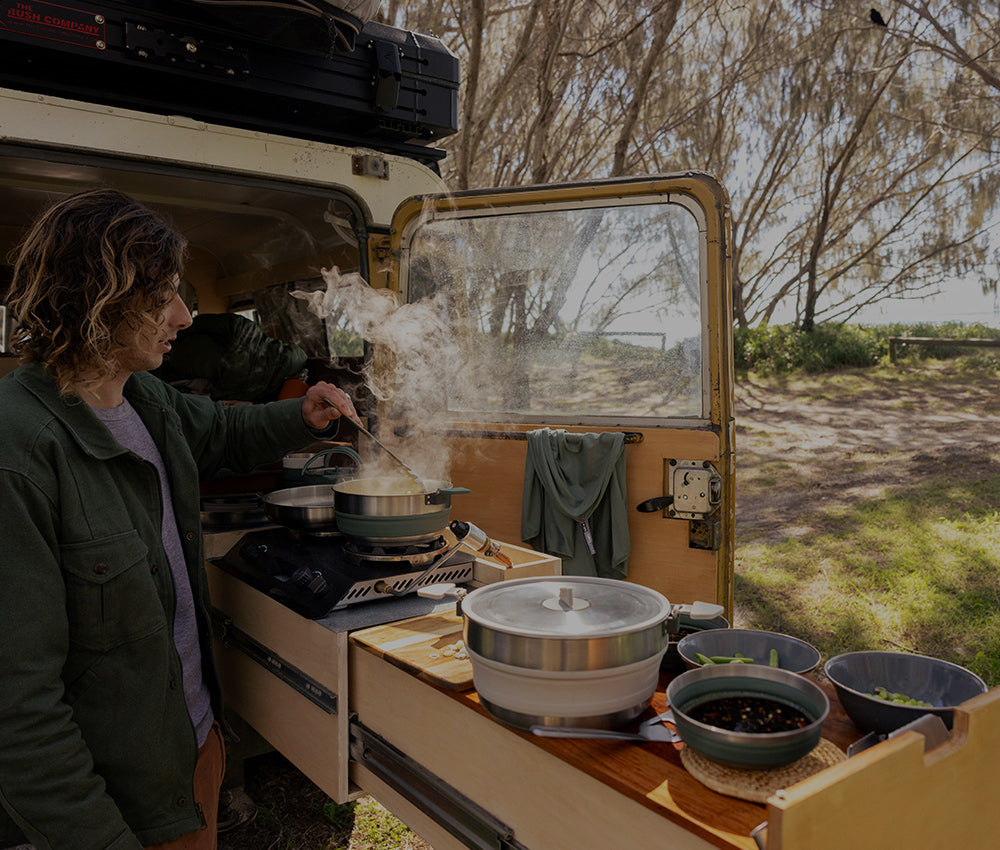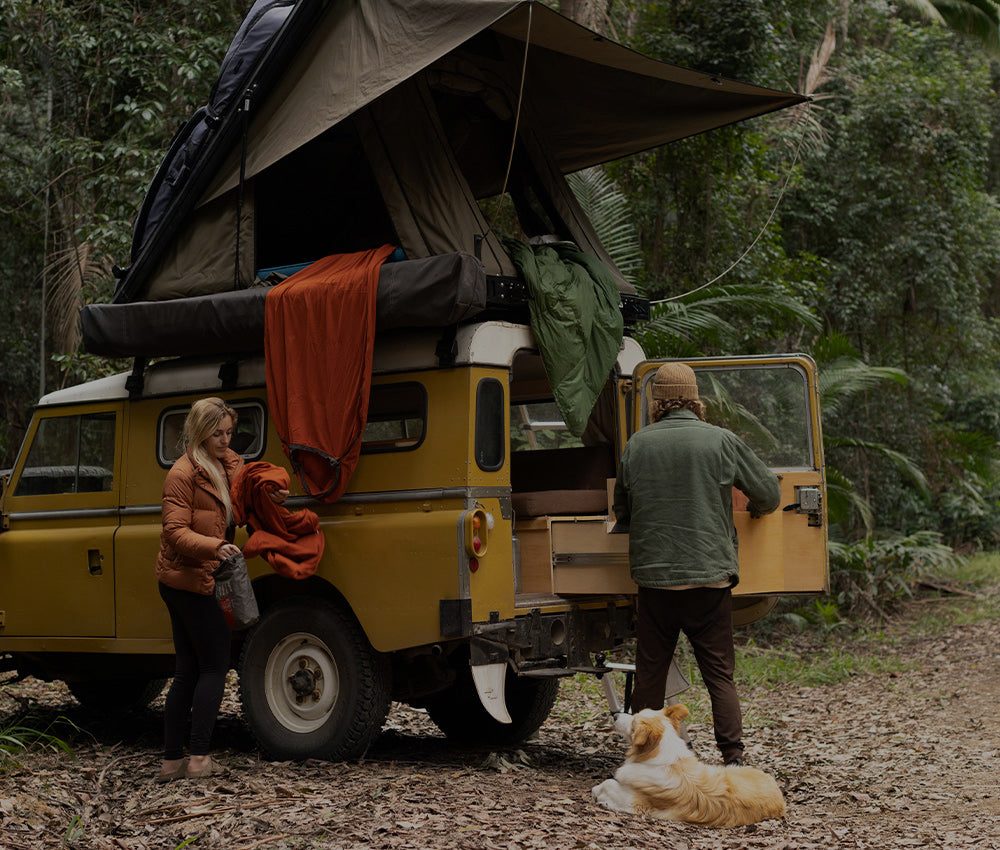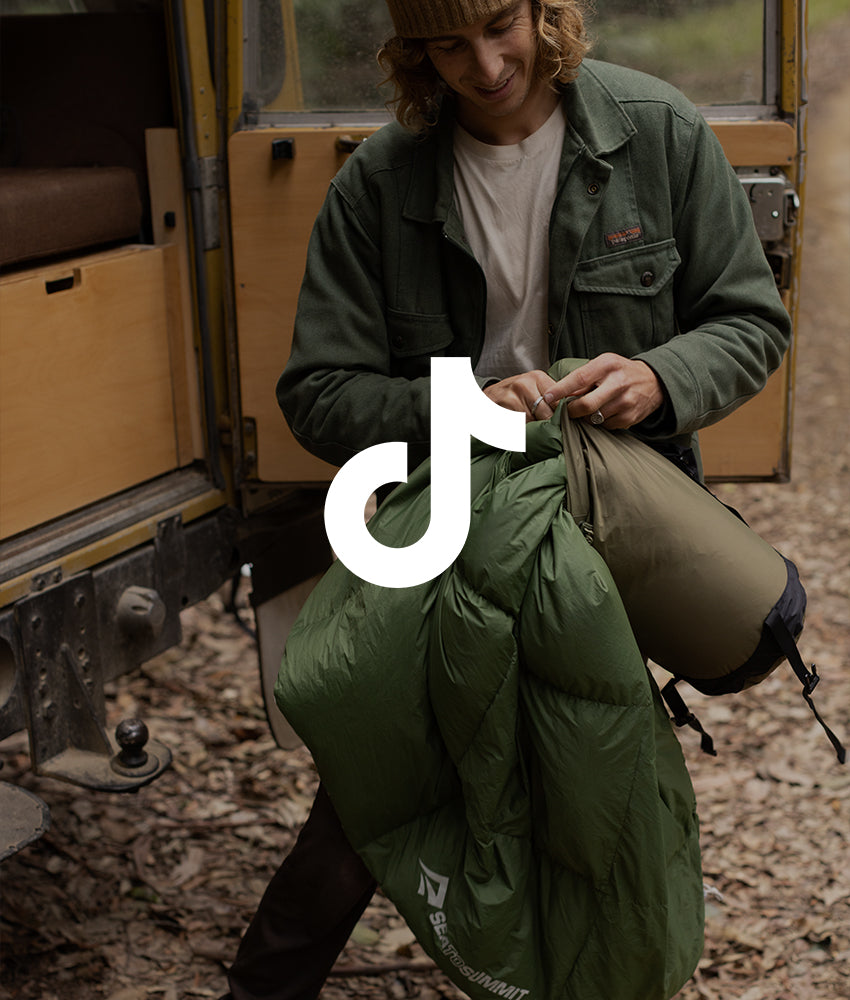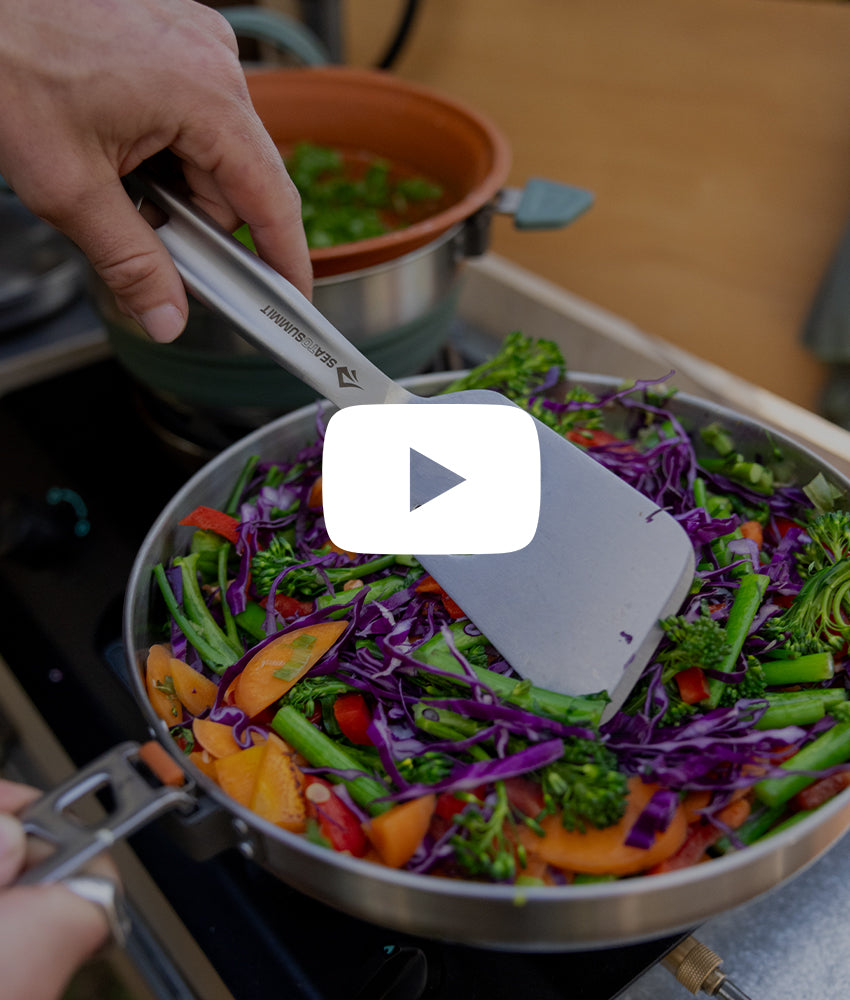Explore how Glenn and Kendall take the comforts of home on the road to live a simple life. Saving space is top priority as they explore the Australian coastline in their 1982 Land Rover. Watch to see how they accomplished this including the new Detour camp kitchen collection.
Watch the short film
OPEN HORIZONS
on the road
off the grid
Experiences are definitely enhanced by the places in which they take place. Those same experiences can also be made that much better by the gear that helped get you there. See what Glenn and Kendall used to make life off grid the greatest experience of their lives.
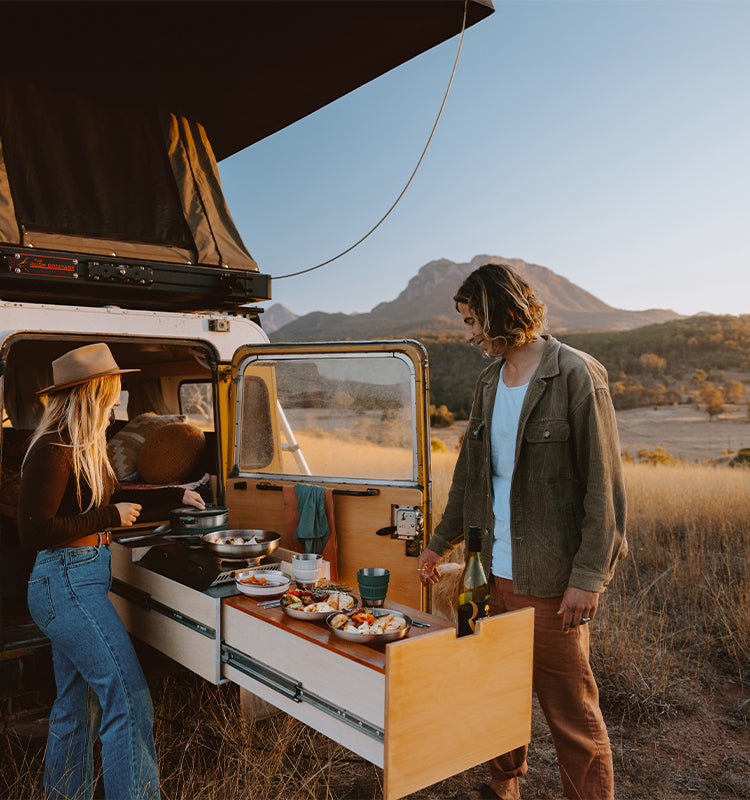
on the roadchasing horizons
After buying a van for a few weekend getaways, Sydney-siders Kendall and Glenn fell in love with the open road. Four years later, the nature loving couple are full-time nomads, as they have found how to own their journey calling a 40-year-old vehicle their home.
Read on the blog